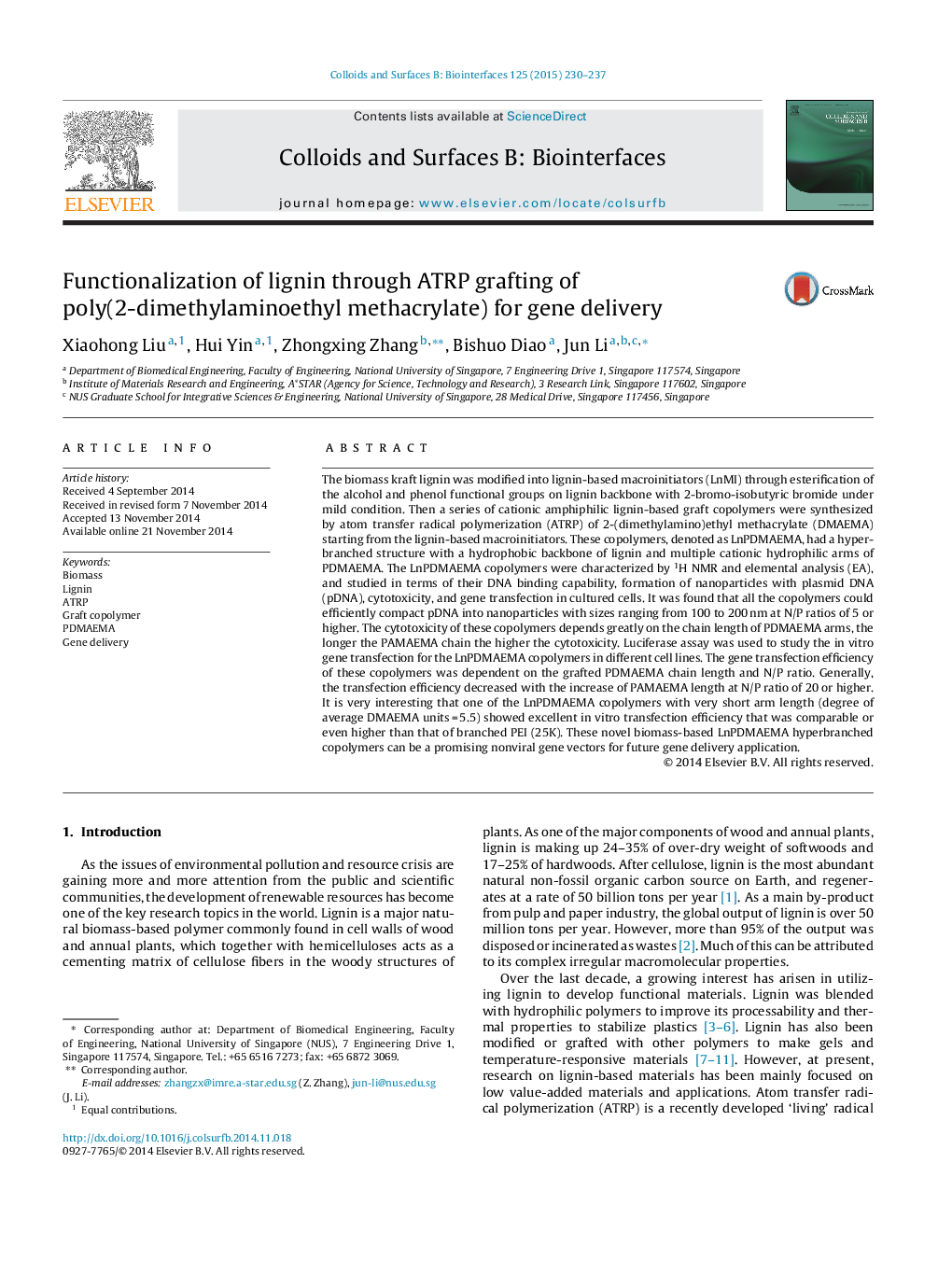| کد مقاله | کد نشریه | سال انتشار | مقاله انگلیسی | نسخه تمام متن |
|---|---|---|---|---|
| 599588 | 1454279 | 2015 | 8 صفحه PDF | دانلود رایگان |

• Cationic amphiphilic lignin-based graft copolymers were synthesized by ATRP grafting of 2-(dimethylamino) ethyl methacrylate (DMAEMA).
• The Lignin-PDMAEMA copolymers were studied in terms of their DNA binding and gene transfection in cultured cells.
• The Lignin-PDMAEMA copolymers could efficiently compact pDNA into nanoparticles suitable for gene delivery.
• The Lignin-PDMAEMA copolymers with short arm length showed excellent in vitro transfection efficiency.
• The transfection efficiency was comparable or even higher than that of high molecular weight branched PEI (25K).
The biomass kraft lignin was modified into lignin-based macroinitiators (LnMI) through esterification of the alcohol and phenol functional groups on lignin backbone with 2-bromo-isobutyric bromide under mild condition. Then a series of cationic amphiphilic lignin-based graft copolymers were synthesized by atom transfer radical polymerization (ATRP) of 2-(dimethylamino)ethyl methacrylate (DMAEMA) starting from the lignin-based macroinitiators. These copolymers, denoted as LnPDMAEMA, had a hyperbranched structure with a hydrophobic backbone of lignin and multiple cationic hydrophilic arms of PDMAEMA. The LnPDMAEMA copolymers were characterized by 1H NMR and elemental analysis (EA), and studied in terms of their DNA binding capability, formation of nanoparticles with plasmid DNA (pDNA), cytotoxicity, and gene transfection in cultured cells. It was found that all the copolymers could efficiently compact pDNA into nanoparticles with sizes ranging from 100 to 200 nm at N/P ratios of 5 or higher. The cytotoxicity of these copolymers depends greatly on the chain length of PDMAEMA arms, the longer the PAMAEMA chain the higher the cytotoxicity. Luciferase assay was used to study the in vitro gene transfection for the LnPDMAEMA copolymers in different cell lines. The gene transfection efficiency of these copolymers was dependent on the grafted PDMAEMA chain length and N/P ratio. Generally, the transfection efficiency decreased with the increase of PAMAEMA length at N/P ratio of 20 or higher. It is very interesting that one of the LnPDMAEMA copolymers with very short arm length (degree of average DMAEMA units = 5.5) showed excellent in vitro transfection efficiency that was comparable or even higher than that of branched PEI (25K). These novel biomass-based LnPDMAEMA hyperbranched copolymers can be a promising nonviral gene vectors for future gene delivery application.
Figure optionsDownload as PowerPoint slide
Journal: Colloids and Surfaces B: Biointerfaces - Volume 125, 1 January 2015, Pages 230–237